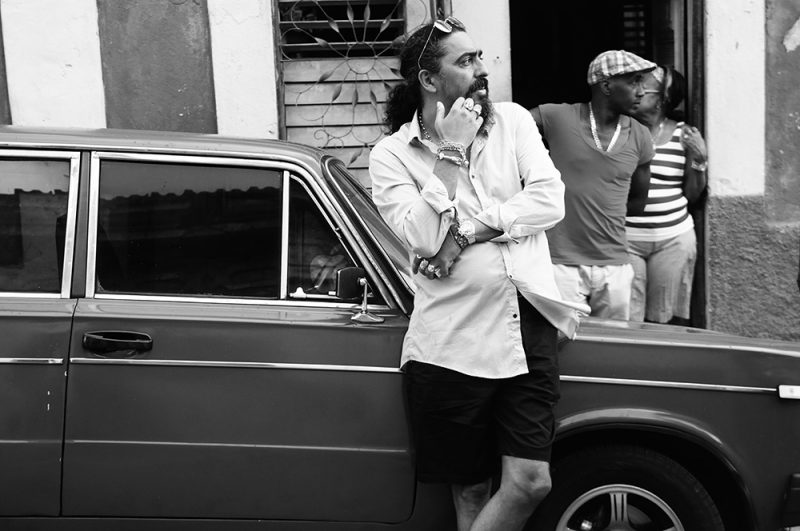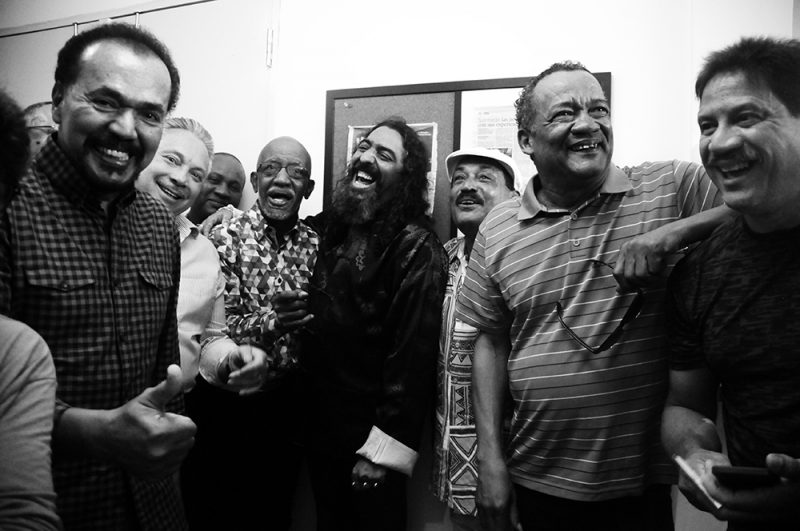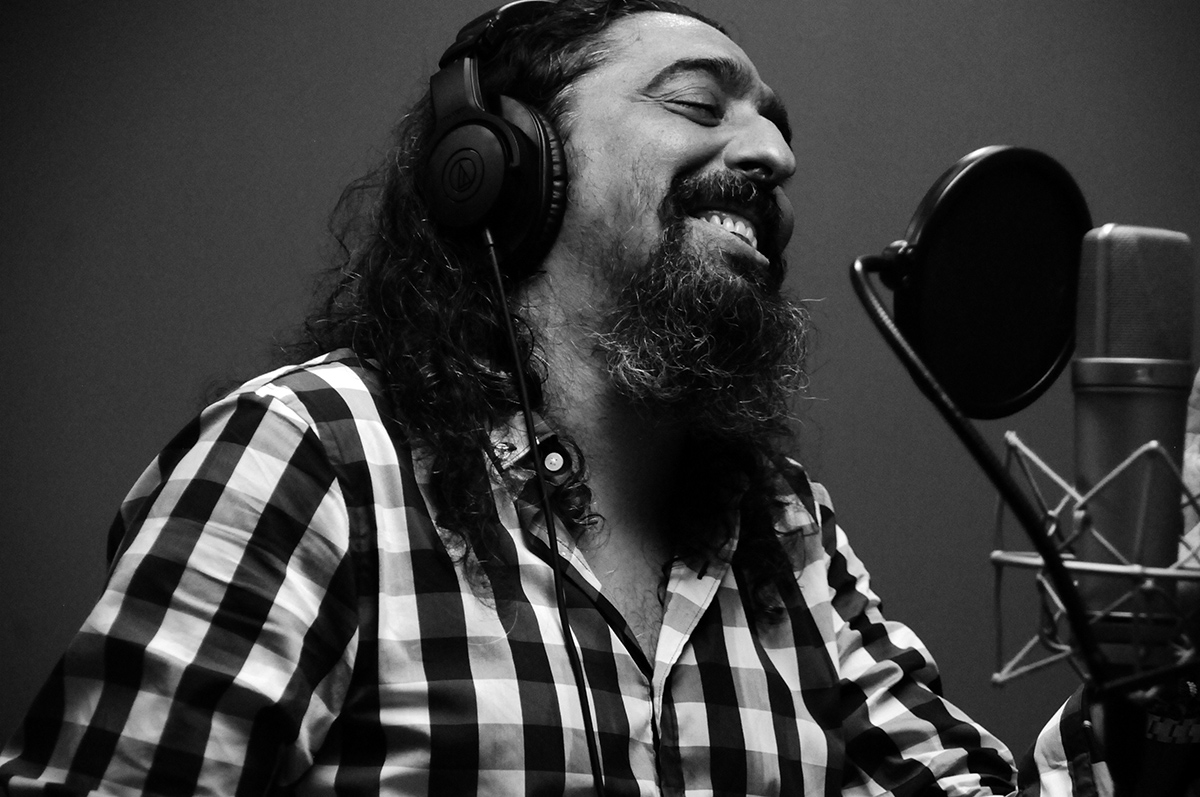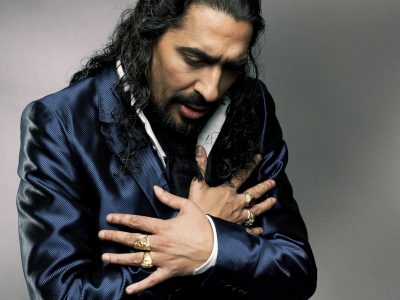- News
- Salsa: Music of the Heart
Salsa: Music of the Heart
By Valentina Acevedo Montilla
I am told by my parents that when I was little they used to ask me, “Valen, where’s the music?” and I would lift my shirt up, touch my heart and say “here.”
Those were the days of Hector Lavoe, Willie Colon, Ruben Blades, La Sonora Ponceña and Carlos Vives. Growing up in Mexico in a house full of artists, music was always the bridge that brought my family together. It connects us now, across the distance between Vancouver and Mexico City. True to this music-sharing tradition, a couple of weeks ago, as I FaceTimed my parents, I read out the songs that make Indestructible, Diego el Cigala’s latest studio album. As I heard my parents sing back to me every single song from the album, I realized that salsa, more than any other genre of music, sounds to me like home—the home that I keep in my heart, no matter where in the world I happen to be.


Indestructible has been in the works for three years now, and is an album that is close to many people’s hearts. El Cigala selected the repertoire of this album with Amparo, his late partner. This album then, comes as a process to pay homage to her. El Cigala says that “all that pain and all that sadness is paid off by singing” (El Mundo, 2016). I realize now, how fitting the title of this album is. There is power and relief in sadness. Although this album exhumes a Latin feeling in every note, as he puts it, it never stops being flamenco. “Everything I sing is canalized from a flamenco point of view. If I had sung Indestructible like a salsa singer, it would’ve been better off sung by a salsa singer. This album is an homage to salsa, but it needs to have that Cigala touch” (El Mundo, 2016).
Thus, he takes us in a musical and geographical journey from Cali (Colombia), San Juan (Puerto Rico), Punta Cana (Dominican Republic), La Habana (Cuba), New York and Miami (USA). We hear songs from Ray Barreto, Tito Curet, Cheo Feliciano, René Touzet. Songs that were immortalized by Héctor Lavoe, La Sonora Ponceña, Fania All Stars, Oscar d’León and Muñequitos de Matanza. Nevertheless, this masterpiece culminated in Jerez de la Frontera (Spain), where he mixed salsa with the sounds of cajón, guitarra and palmas flamencas with his friend Diego el Morao. He collaborates with big names like Oscar d´León, Muñequitos de Matanza, Larry Harlow, Roberto Roena, Eddie Montalvo, Jorge Santana, among more than 70 musicians from all over the world that helped construct the essence of this piece (El Pais, 2016).

The song that gives this album its title, Indestructible, was made famous by Ray Barretto, a Nuyorican conga player and singer that presided over the transition in the 70s from what was called “Latin” to “Salsa” . Salsa became, for an entire generation (both in the United States and later on in Latin America) a way of dealing with racism, injustice and politics. The lyrics of Indestructible, released in 1973, ring true to these ideas:
| Yo traigo la fuerza de mil camiones,
a mi me llaman el invencible Con sangre nueva indestructible |
With the strength of a thousand trucks,
they call me invincible With this new blood I’m indestructible |
The album weaves through several other anthems of salsa such as the late Cheo Feliciano’s El Ratón, which El Cigala wishes could have been a collaboration with him. Of this he says, “when I sang it, I felt him very present, as if he had come down to see me” (elcigala.com, 2016). For this song, El Cigala brought together most of the names that we recognize from the original La Fania All Stars musicians such as Bobby Valentin, Roberto Roena, Reynaldo Jorge, Eddie Montalvo, Nicky Marrero and Luis Perico Ortiz. Cheo’s memory certainly lives in this homage to him.
Finally, the album beautifully, soulfully and masterfully closes with Como Fue, the bolero written by Ernesto Duarte Brito and immortalized by the great Cuban singer Benny Moré. This love song, solely accompanied by the hands of Gonzalo Rubalcaba in the piano, is the ultimate declaration of love. Love for his late partner, for this beautiful genre of music that united generations of Latin American immigrants, and love to the people that made this album, and this history, possible. The lyrics of the song go:
| ¿Cómo fue?
¿Cómo fue? No sé decirte cómo fue, No sé explicar de que paso, Pero de ti me enamoré.
Fueron tus ojos o tu boca, Fueron tus manos o tu voz, Fue a lo mejor la impaciencia de tanto esperar tu llegada. Más, no se. |
How Was It?
How was it? I can’t tell you how it was, I can’t explain what happened But I fell in love with you.
It was your eyes or your mouth, It was your hands or your voice, It was perhaps the impatience of waiting so long for your arrival. Anymore, I don’t know. |
Diego El Cigala performs at the Chan Centre on November 20, 2016.
About the author

Valentina Acevedo Montilla is a Mexican-Venezuelan student who grew up in Mexico City. She is in her fifth year at UBC pursuing a degree in Art History and Anthropology in Museum Studies, and is particularly interested in contemporary art. She has been working at the Chan Centre for the Performing Arts as the Programming Assistant for the past three seasons.



